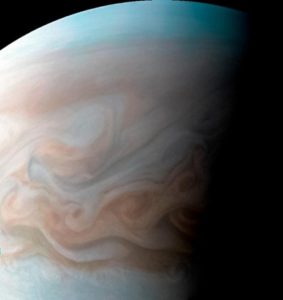
Jupiter, the gaseous giant and the largest planet in our solar system, could also be the oldest resident of Earth’s solar system, a new study carried out by an international team of scientists from the Lawrence Livermore National Laboratory (LLNL) suggests.
Using evidence from meteorites, this study indicates that Jupiter was the first to take shape in our solar system and was also a major factor in formation of Earth.
“We do not have any samples from Jupiter, in contrast to other bodies like the Earth, Mars, the moon and asteroids,” said Thomas Kruijer, lead author of the paper and a researcher at LLNL, in a press release.
“In our study, we use isotope signatures of meteorites (which are derived from asteroids) to infer Jupiter’s age.”
Earlier, scientists believed that Jupiter came into existence within the first 10 million years of the birth of our solar system, and that the swirling clouds of Jupiter likely originated from the massive spinning disk of gas and dust around the sun.
In the current study, researchers analyzed 19 samples from iron meteorites at the Natural History Museum in London and Chicago’s Field Museum. They studied the isotopic ratios of the heavy metals molybdenum and tungsten in these samples. A bit of each sample was dissolved in acid, and then tungsten and molybdenum were separated for analysis. The results suggested that the meteorites could be separated into two categories: (1) meteorites that formed closer to the sun than Jupiter’s current orbit and (2) meteorites that formed further out. Despite this difference, both groups of meteorites were formed at the same time, roughly one to four million years after the solar system came into existence.
According to researchers, these two groups of meteorites came into existence because the gravity of a young Jupiter could keep the meteorite populations apart.
“The only mechanism or way to do this is to have a gas giant in between them,” study author Thomas S. Kruijer of the Lawrence Livermore National Laboratory tells Amina Khan at The Los Angeles Times.
“Because only such a body is large enough to separate such large reservoirs.”
Jupiter’s solid core likely grew about 20 times the size of the Earth in those first million years. Then over the course of another three to four million years, Jupiter’s core grew to 50 Earth masses.
“Our measurements show that the growth of Jupiter can be dated using the distinct genetic heritage and formation times of meteorites,” Kruijer said.
The detailed findings of the study have been published in the Proceedings of the National Academies of Science.
